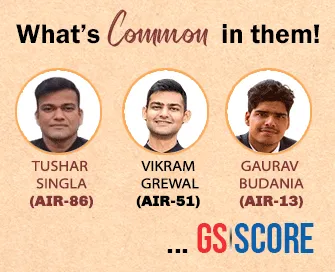

3rd July 2025 (12 Topics)
Context
The Union Budget 2025 recognised gig and platform workers by extending social protection schemes. However, the revised Periodic Labour Force Survey (PLFS) 2025 failed to incorporate specific classifications for these workers, limiting data-driven welfare interventions.
Definition & Legal Classification of Gig Workers
- Codification under Social Security Code, 2020: Gig workers are defined under Section 2(35) of the Code on Social Security, 2020, distinguishing them from traditional employer-employee frameworks.
- Ambiguity in Terminology: Despite the legal mention, lack of clarity around task structure, hybrid work nature, and algorithmic governance remains.
- NITI Aayog Estimates: India’s gig workforce is projected to reach 23.5 million by 2029–30, yet it lacks robust statistical representation.
Issues in Current PLFS Framework
- Vague Categorisation: Gig work is subsumed under broader PLFS categories like "self-employed" or "casual labour," masking its unique vulnerabilities.
- Ministry Response & Statistical Shortcomings: The government stated gig workers are included as part of "economic activity," but failed to modify classifications for digital labour.
- Invisible Labour Dynamics: PLFS overlooks characteristics such as lack of contracts, income volatility, multiple-app employment, and algorithmic control.
Social Security and Policy Challenges
- Unrealised Welfare Intentions: Provisions under Clause 141 of the Social Security Code remain weak due to poor data-backed targeting.
- Exclusion from Access: Gig workers often remain outside the net of Ayushman Bharat, digital health IDs, and other schemes due to their statistical invisibility.
- Gap Between Recognition and Representation: While administrative mechanisms like e-Shram exist, the absence of a separate PLFS category results in under-coverage and policy inefficiency.
Way Forward
- Institutional Realignment of PLFS: A special classification code for gig and platform workers must be introduced in PLFS to disaggregate employment data effectively.
- Survey Methodology Reform: Questionnaire modules should reflect platform-based task work, multiple job holdings, contract type, algorithmic dependence, and social security access.
- Inter-Agency Coordination: National Statistical Office (NSO), NITI Aayog, and the Ministry of Labour must collaborate to ensure integrated, inclusive labour data generation.
- Expansion of Welfare Boards: Gig workers must be included in State-level welfare boards under dedicated categories for monitoring benefit delivery.
- Promoting Digital Labour Equity: With India's increasing digital economy footprint, inclusion of gig workers in employment datasets is critical for equitable growth and social protection.
More Articles


